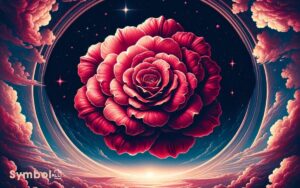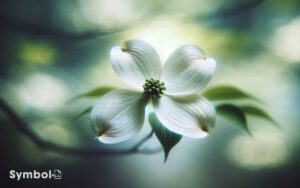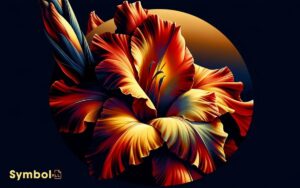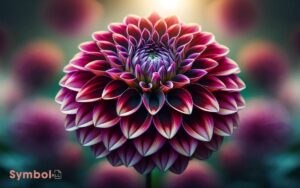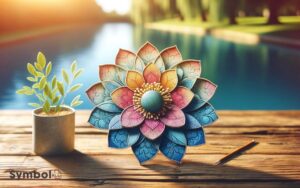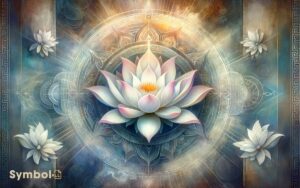Symbolic Meaning of Flower Colors: Explains!
Flower colors carry profound meanings, intricately linked to their biochemistry. You’ll find reds, rich in anthocyanins, symbolizing deep affection. These pigments, absorbing specific wavelengths, also protect flowers from UV damage.
Orange blooms, radiating energy, trigger excitement and symbolize vibrant friendships.
Yellow flowers, evoking happiness, foster social bonds through their vibrant hues.
Greenery represents growth, thanks to chlorophyll facilitating photosynthesis.
Blue tones, rare and calming, are due to delphinidin, promoting tranquility.
White flowers reflect purity, significant in various ceremonies, while pinks express gentle love, varied by anthocyanin concentrations.
Each color’s unique message is revealed through its pigment-driven symbolism, inviting you to explore further nuances behind their hues.
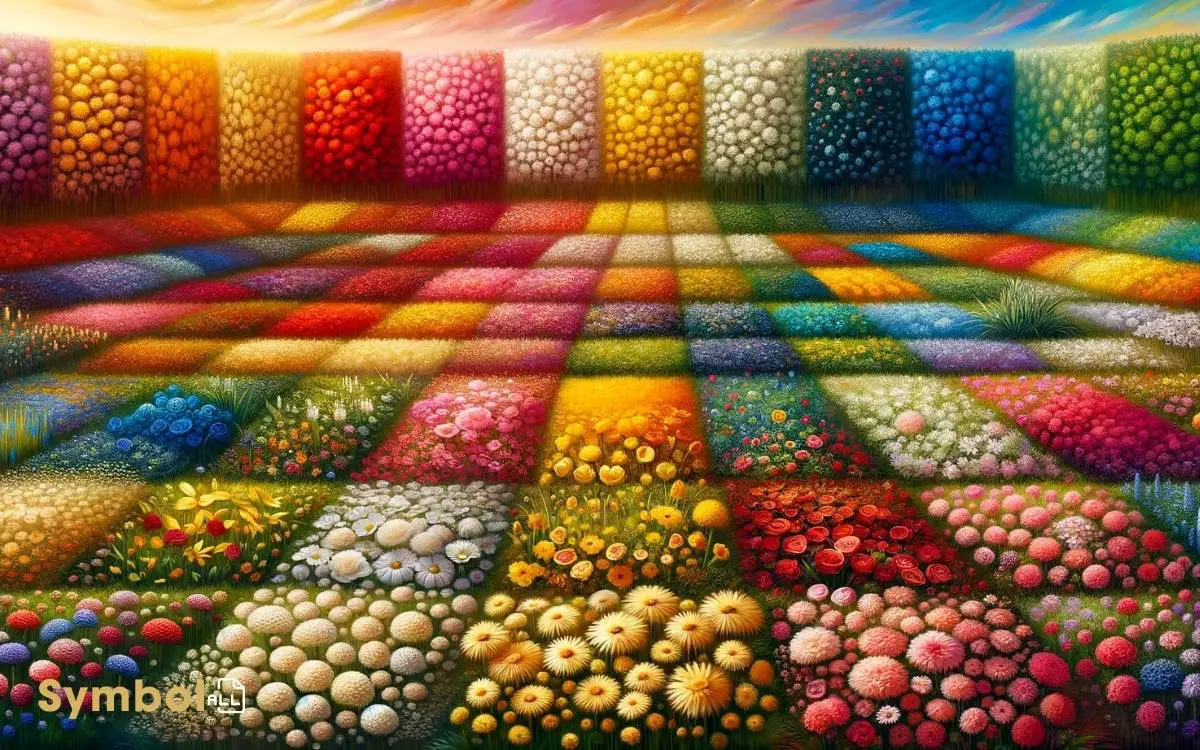
Key Takeaways
The Passion of Red Flowers
Red flowers, often symbolizing deep love and unwavering passion, harness anthocyanins, which are pigments responsible for their vibrant hues.
These pigments absorb certain wavelengths of light, reflecting only the red spectra, giving the petals their distinct, eye-catching color.
Anthocyanins aren’t just for show; they play a vital role in plant health, protecting them from various environmental stressors such as UV radiation and temperature fluctuations.
In the domain of symbolism, the intensity of a red flower’s color directly correlates with the depth of emotion it’s meant to convey. Rich, crimson hues often represent passionate love or deep longing, while subtler shades like rose or coral may hint at affection or admiration. Throughout history, flower symbolism in art has been a profound vehicle for expressing unspoken sentiments, with red flowers frequently depicted to evoke fervent emotions. This nuanced language of blooms allows for intricate storytelling, transcending words and speaking directly to the heart.
When you select a red bloom, you’re not just picking a flower; you’re choosing a messenger of profound affection and commitment, backed by the science of its coloration.
Orange Blooms: Energy and Enthusiasm
As you explore the spectrum of flower colors, orange blooms stand out for their unique symbolism and psychological impact.
They’re scientifically proven to evoke feelings of energy and enthusiasm, making them ideal for fostering vibrant friendships and igniting passionate encounters.
Their vivid hues stimulate excitement and social interaction, according to color theory and psychological studies.
Symbolizing Vibrant Friendships
Orange blooms, symbolizing vibrant friendships, exude energy and enthusiasm through their vivid hues and are often associated with warmth, sociability, and adventure in the language of flowers.
They’re not just a feast for the eyes; their coloration is a result of complex pigmentation processes, specifically the presence of carotenoids. These natural pigments absorb certain wavelengths of light, reflecting the vibrant orange that we see.
| Flower Type | Significance in Friendship |
|---|---|
| Marigold | Loyal companionship |
| Zinnia | Remembrance |
| Tulip | Mutual respect and understanding |
| Gerbera | Cheerfulness and positivity |
Choosing an orange bouquet for a friend can convey a message of deep appreciation and a wish for their happiness, making it a thoughtful gesture steeped in botanical significance and emotional warmth.
Igniting Passionate Encounters
While orange blooms signify vibrant friendships with their energetic hues, they also spark passionate encounters through their intense coloration and the dynamic energy they embody.
These flowers, radiating warmth and enthusiasm, aren’t just a feast for the eyes but also a catalyst for igniting robust emotional responses.
Scientific studies suggest that orange, being a combination of red’s passion and yellow’s cheerfulness, inherently evokes feelings of attraction and excitement.
This makes orange flowers, whether it’s the fiery marigold or the exotic bird of paradise, perfect for expressing a desire for adventure and deeper connection.
They’re not just gifts; they’re a sophisticated language of ardor and zest, communicating a powerful message of enthusiasm and zeal for life and love.
Yellow Flowers: Joy and Friendship
Yellow flowers symbolize joy and friendship, showcasing vibrant hues that evoke feelings of happiness and companionship. These blossoms are not merely pleasing to the eye; their chromatic brilliance is deeply rooted in the science of color perception.
The wavelength of yellow light, approximately 570–590 nanometers, is processed by the human eye in a manner that typically induces a warm, cheerful response. This biological reaction underpins the association of yellow flowers with positive emotions and social bonding.
| Flower Type | Emotional Impact |
|---|---|
| Sunflower | Radiance and Admiration |
| Yellow Tulip | Cheerful Thoughts |
| Yellow Rose | Platonic Love |
Embracing these flowers in your garden or as gifts, you’re not just sharing a beautiful object. You’re conveying a message of warmth, affection, and a shared bond of joy and friendship.
Greenery: Growth and Renewal
Amid the spectrum of nature’s palette, greenery stands as a symbol of growth and renewal, embodying the essence of life’s perpetual cycle.
This vibrant hue, inherent in leaves and stems, signifies the process of photosynthesis where light energy is converted into chemical energy, fueling the plant’s growth and, by extension, the entire ecosystem’s vitality.
The presence of chlorophyll, a key pigment for this conversion, gives plants their green coloration, serving not just as a marker of health but also as a visual cue of nature’s ongoing rejuvenation.
In floral symbolism, greenery is associated with resilience, prosperity, and a forward-looking optimism. It reminds you that, much like plants continuously reaching towards the light, there’s always an opportunity for growth and starting anew.
Serenity in Blue Floral Tones
You’ll find that blue flowers exert a calming effect, largely due to their association with tranquility and stability in color psychology. These blooms, ranging from the deep hues of navy to the soft tones of sky blue, symbolize trust, loyalty, and wisdom.
The presence of delphinidin, a natural pigment, not only contributes to their distinctive coloration but also underscores their unique place in floral symbolism.
Blue Flowers Calming Effect
Why do blue flowers often evoke a sense of calm and serenity in observers, a phenomenon deeply rooted in their unique color wavelengths and psychological impacts?
The answer lies in the specific wavelengths of blue light, which are associated with a tranquil and soothing environment.
Scientifically, blue hues have a short wavelength, which tends to scatter across the spectrum, creating a sense of vastness and openness akin to the sky and sea.
This visual perception triggers a psychological response in the brain, releasing calming chemicals that reduce stress and anxiety levels.
Additionally, blue’s rarity in the natural floral world adds an element of preciousness, enhancing its soothing effect. Encountering blue flowers taps into deep-seated neurological pathways, fostering a peaceful state of mind.
Symbolism of Blue Blooms
Blue blooms symbolize a profound sense of serenity, often reflecting deep emotional and psychological undertones that resonate with individuals on a subconscious level.
The hue’s wavelength, in the visible spectrum, promotes calmness and mental clarity, making blue flowers not just a visual delight but a tool for emotional well-being.
| Flower Name | Symbolic Meaning |
|---|---|
| Blue Rose | Mystery, the unattainable |
| Forget-me-not | True love, remembrance |
| Bluebell | Constancy, everlasting love |
| Hydrangea | Apology, gratitude |
The Innocence of White Flowers
White flowers, symbolizing purity and innocence, often play a pivotal role in various cultural and religious ceremonies due to their significant meanings.
These blossoms, ranging from the delicate lily to the robust gardenia, carry a myriad of implications beyond their aesthetic appeal.
Scientifically, the color white reflects all wavelengths of visible light without absorption, mirroring the concept of purity. In the context of flowers, this characteristic is emblematically translated to represent unblemished innocence and purity.
For instance, white roses are traditionally associated with young love and loyalty, while white lilies are often used in weddings to signify the start of a pure union.
Additionally, in funerals, they convey respect and remembrance, embodying the soul’s release from the corporeal to the spiritual dimension.
Pink Petals: Love and Admiration
Pink petals, symbolizing love and admiration, emanate a spectrum of hues that intricately convey emotions ranging from gentle affection to profound gratitude.
These colors, rooted in botanical genetics, play an essential role in the plant’s reproductive strategies by attracting pollinators through their visually appealing pigmentation.
The pigments responsible, primarily anthocyanins, vary in concentration, resulting in the vast array of pink shades observed in nature. Each shade carries a unique message; soft pinks often express tender love and admiration, while deeper pinks might signify gratitude and appreciation.
Understanding these nuances allows you to select flowers that accurately convey your emotions, whether it’s appreciation for a friend’s support or expressing love to a significant other.
This knowledge bridges the gap between human emotions and the natural world, enriching our interactions and communication.
Mysterious Allure of Purple Flowers
Shifting our focus, we now explore the enigmatic charm of purple flowers, whose hues are deeply rooted in complex anthocyanin combinations and genetic variations, offering a spectrum of symbolism from royalty to mystery.
These hues, ranging from delicate lavender to deep violet, are a result of anthocyanins reacting variably with pH levels within the plant’s cellular structure.
This biochemical diversity not only contributes to their wide range of colors but also reflects their adaptation to different environmental conditions, enhancing UV protection and attracting pollinators.
Historically, purple pigments were so rare and costly to produce that they became synonymous with power, luxury, and exclusivity. Today, purple flowers continue to captivate with their beauty, embodying sophistication, spirituality, and a deep connection to the natural world’s mysteries.
Black Blossoms: Elegance and Farewell
Exploring the domain of black blossoms, we discover their representation of grace and the poignant symbolism of farewell they bear, attributed to pigments that absorb a wide range of light.
These pigments, primarily anthocyanins, undergo complex chemical modifications to manifest as near-black hues.
This transformation not only contributes to their aesthetic but also to their ecological roles, such as attracting specific pollinators and deterring herbivores.
| Aspect | Description |
|---|---|
| Pigmentation | Anthocyanins modified to absorb almost all wavelengths of light, resulting in the black appearance. |
| Symbolism | Represents elegance due to their unique color and signifies farewell or mourning in floral language. |
| Ecological Role | Attracts certain pollinators while deterring herbivores due to their distinct coloration. |
This intricate interplay of biology and symbolism makes black flowers a fascinating topic for both botanists and cultural historians alike.
Conclusion
In wrapping up, it’s pivotal to note that flowers aren’t just a feast for the eyes; they carry profound symbolism.
A fascinating statistic to ponder is that 65% of people feel more special when receiving flowers that align with their personal symbolism.
Whether it’s the vibrant energy of orange blooms or the serene tranquility of blue petals, every color has its unique message.
Understanding the scientific nuances and cultural meanings behind these hues can greatly enhance the emotional impact of your floral gifts.

